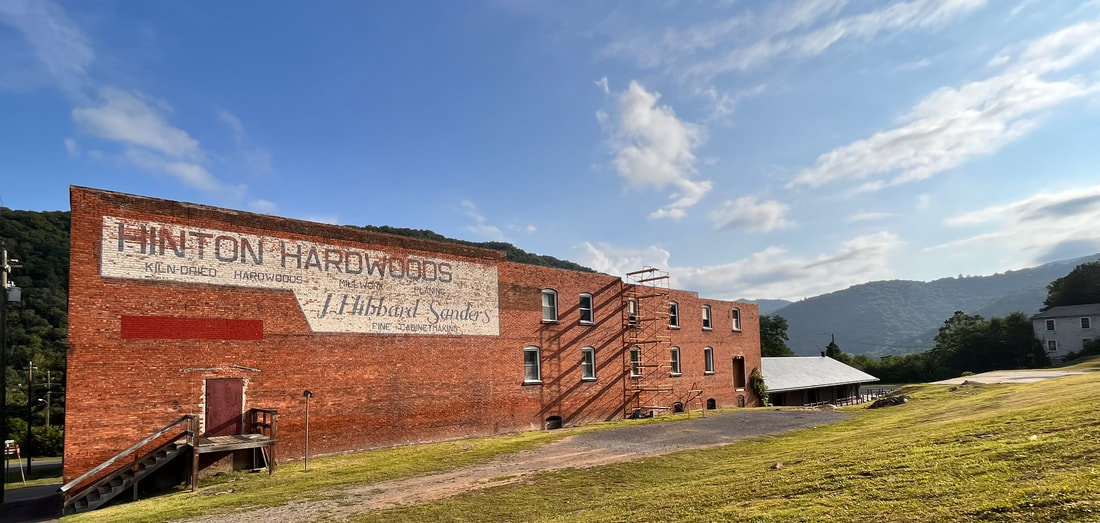|
Hidden in the southern hills of West Virginia, Hinton sports what most American towns can only dream of: a train station. Built as a terminal of the C&O railroad, the history of Hinton hinged on this connection. The railroad brought industry to the town, with warehouses like the New River Grocery Co. lining Hinton’s downtown to process wares from across the country. Once a center of business, the building has suffered from decades of neglect, but no longer! Thanks in part to a $108,000 Saving Historic Places Grant from the Preservation Alliance of West Virginia, the New River Grocery Co. building will once again be a center of activity in Hinton. Situated close to the New River, the three-story brick warehouse, also known as the Hardwoods Building, contributes to the Hinton Historic District, a listed area on the National Register of Historic Places. The warehouse and the district were vital to the system of railroad freight that made Hinton a boomtown in the late 19th and early 20th centuries. “The City of Hinton would not exist without our railroad history,” says Charles Saunders, President of the Summers County Commission. It’s no coincidence that Hinton is also home to the Hinton Railroad Museum. As Hinton evolved, so did the New River Grocery Co. building, transforming from a railroad warehouse to a woodworking shop, and even housing a skating rink at one time. Although popular with the locals, the building would eventually fall into disuse and disrepair. In August 2021, the vacant building suffered a ceiling collapse. Yet the town of Hinton has not given up. After a structural analysis funded by the WV Community Development Hub, plans are in motion to restore the building to community use. PAWV’s Saving Historic Places Grant will fund repair work on the roof and lead the way to resurrecting the building. Further funding from both the local government and other sources will see the building first used as an event space and multipurpose area for local nonprofits and volunteer organizations. There is also an opportunity to relocate the Railroad History Museum to the building. Long-term plans include the development of a restaurant or brewery on the first floor with apartments on the 3rd floor with access to a rooftop patio. As a former warehouse, the interior space is so large that it can accommodate all kinds of possibilities.
While industrial rail usage in the area may be gone, Hinton isn’t going anywhere. And by the way, you can still take a train to Hinton! The local train station is still active, with Amtrak’s Cardinal route running from Chicago to New York right through Hinton.
1 Comment
|
AuthorHistoric building owners from around West Virginia submit their preservation success story. Archives
July 2024
Categories |
Get Involved |
Programs |
Contact UsPreservation Alliance of West Virginia
421 Davis Avenue, #4 | Elkins, WV 26241 Email: [email protected] Phone: 304-345-6005 |
Organizational Partners:
© COPYRIGHT 2022 - PRESERVATION ALLIANCE OF WEST VIRGINIA. ALL RIGHTS RESERVED.


 RSS Feed
RSS Feed



